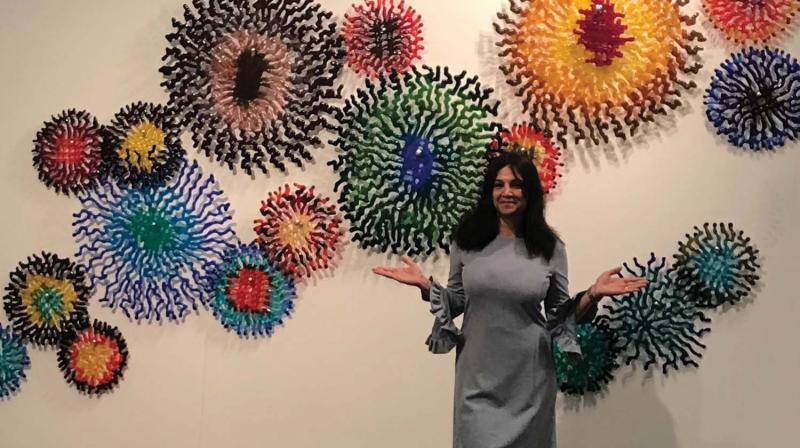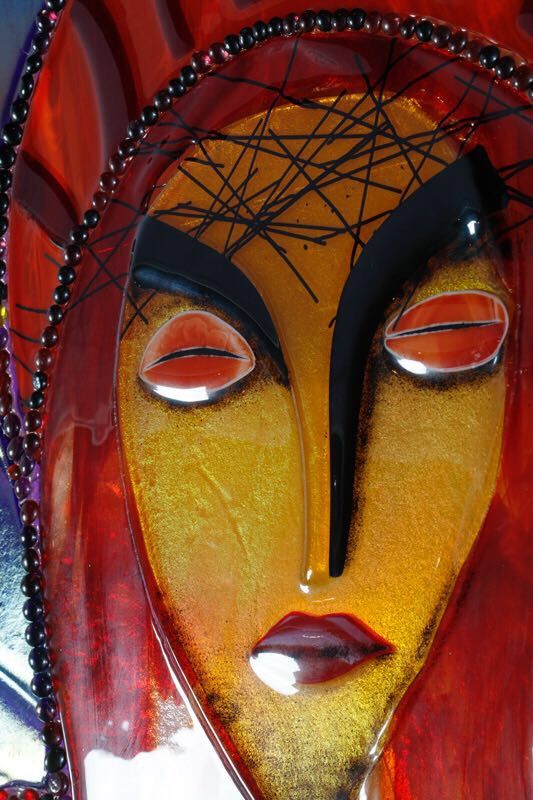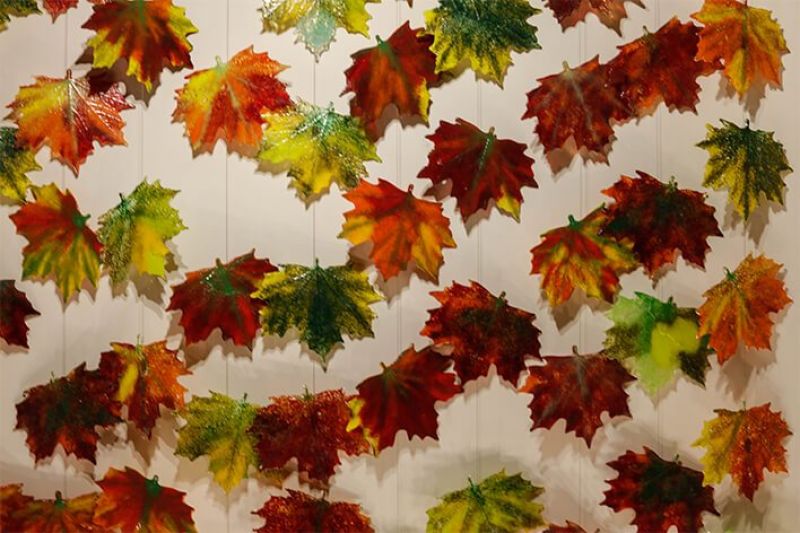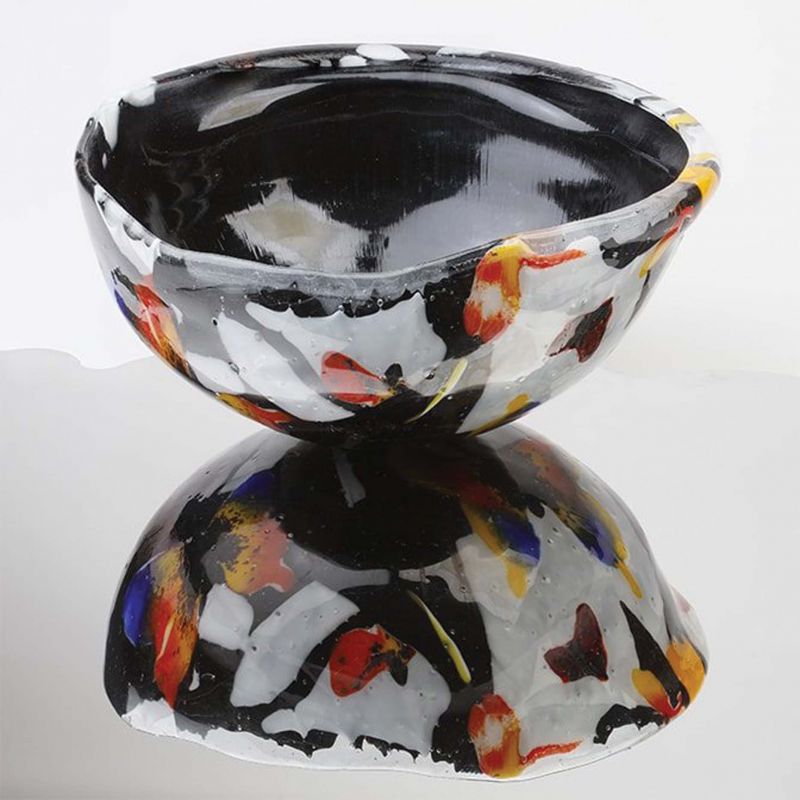Bringing glass to life
Hasna Sal is a US-based glass sculptor who is part of a miniscule global community.

“Glass is like a woman; she’s fragile and delicate, but she goes through great struggles and becomes stronger. The more stress you put her through, the stronger she gets; but push her beyond her breaking point and she will shatter beyond repair, just like glass!” says US-based Hasna Sal. It is only natural that Hasna links glass to a woman for it is a medium she is intimately acquainted with as much as she is with her own self. Hasna is part of the rare breed of glass sculptors, who love to give their sculptures a voice and then let these seduce the senses of the onlookers. In her own words — her creations of glass are a cornucopia of planes, textures, tonalities, resonances, moods, emotions, morality, chaos, and more. And yes, her sculptures are also the voice of colour, which she believes is fundamental to the human spirit as it alleviates, invigorates and humanises.
 Hasna’s glass sculptures.
Hasna’s glass sculptures.
Born in the coastal district of Vypin in Kochi, it was her education in a Catholic school that exposed her to stained glass. A fascination took birth and never let go as she says, “As a child, I used to stare in awe for hours and hours at the images in glass at the chapel. But the metal in the glass always bothered me; I felt like it was an aberration.” Her fascination with the medium of glass never went away and influenced her education. Hasna completed four years of fine arts from England and Wales and moved to the US to pursue an architectural degree from Boston, where her thesis was glass. She exclaims, “By then I was totally in love with the material.”

It was her post graduation at Harvard that had her dabbling in glass, which proved to be a life-changer. Glass, unlike any other medium, creates rich flowing compositions. She says, “I made some things in glass for my fellow students and professors. When the Head of the Department saw my work, he said I should seriously consider doing this full-time because I had a rare and unique gift. This was the validation I needed; if the head of one of the greatest universities in the world thought I had it, then I must have it in me. That gave me the confidence and courage to start on my own, and I have never looked back since.” America has cutting-edge prowess in glass, which allowed her talent to bloom and flower. She adds, “I have learned from 28 artists around the world and I’m continuing to do so. America is the best thing that has ever happened to me. I love the country for its innovativeness and opportunities.”
Part of a minuscule global community, glass sculptors have a respectful attitude towards each other. “The higher we go, the more sculptors we know. After a point, you pretty much know everybody in the field globally. It’s a very expensive, tedious and very dangerous craft. Anything can happen at any time, even though we take precautions as best as we can. When you melt glass at 2000 degrees, glass can do all sorts of things. You have to be brave and incredibly committed. It took me 20 years of learning glass to get to where I am today, after my architectural training. But it’s worth it. All sculptors know the path is not easy, so the respect and admiration are sincere and mutual,” she states.

Glass as a medium is not easy to work with as Hasna mentions, “Glass is unpredictable. So many factors influence this material. Weather, climate, seasons, manufacturer, place of manufacture, soil, temperature gradient, heat shelf, the coefficient of expansion etc just to name a few. The more experienced you are, the better you can handle this ‘liquid’. And still, there are issues that pop up.” She laughs and says, “The rule in the glass world is ‘always keep a band-aid ready’. Band-aid is my friend.” Hasna does myriad processes — glass-blowing, kiln-working, casting, silk screening, sandblasting, lampworking, etc. just to name a few. Her themes are mostly nature-based, inspired by the natural ethereal world and there is a reason for the influence. “I studied landscape architecture from Harvard, which taught me to see nature in a different light,” she says, adding that she is also inspired by women, children and horses.
Talking about the process of creating fascinating, beautiful and versatile sculptures with the ability to reflect, refract and diffuse light, she first says there are a lot of processes involved and choosing a particular process depends on various factors. “Melting glass on mandrels, blowing glass from a borosilicate pipe, grinding glass, sawing glass, beveling and polishing glass — there are innumerable processes,” she explains, taking a moment and then adding, “I could write (and perhaps should one day) a book on it.” She creates sinks, wall hangings, sculptures, panels, functional household objects and jewellery and adds, “Magic happens when a design idea becomes alive in shapes of glass.” The work is backbreaking and requires a lot of virtues, which she lists out, “Sincerity, dedication and complete commitment. There are no exceptions or excuses. It’s one of the most demanding fields in art and science combined. You have to be an artist and a scientist at the same time, all the time; one cannot survive without the other. If it does, the ramifications can be fatal,” she completes.
The dedicated sculptor takes a walk down memory lane and goes back to her first sculpture, “It was of Mary, Jesus and Joseph,” mentioning that she did not know why but felt she had to sculpt that in glass and continues, “It was 7-ft-9-inches-tall and 8-ft-6-inches-wide, and 1-foot-deep. It was freestanding and lighted with LED. It was my most challenging installation to create at such a large scale.” Complete it she did and Hasna got a lot of recognition for it. She simply states, “My philosophy is — if you are going to swim, jump in at the deep end. If you survive, you can swim anywhere. If you can’t, you were never meant for it.” Survive she did and flourish too with her works getting major appreciation through exhibitions held in major cities in America. She says, “I have been invited to do a lot of shows and I enjoy the response of each society.” Talking about a proud moment she says, “I got the Doge International Award in Venice for my presentation at the Biennale and it was one of the best moments of my life.”
